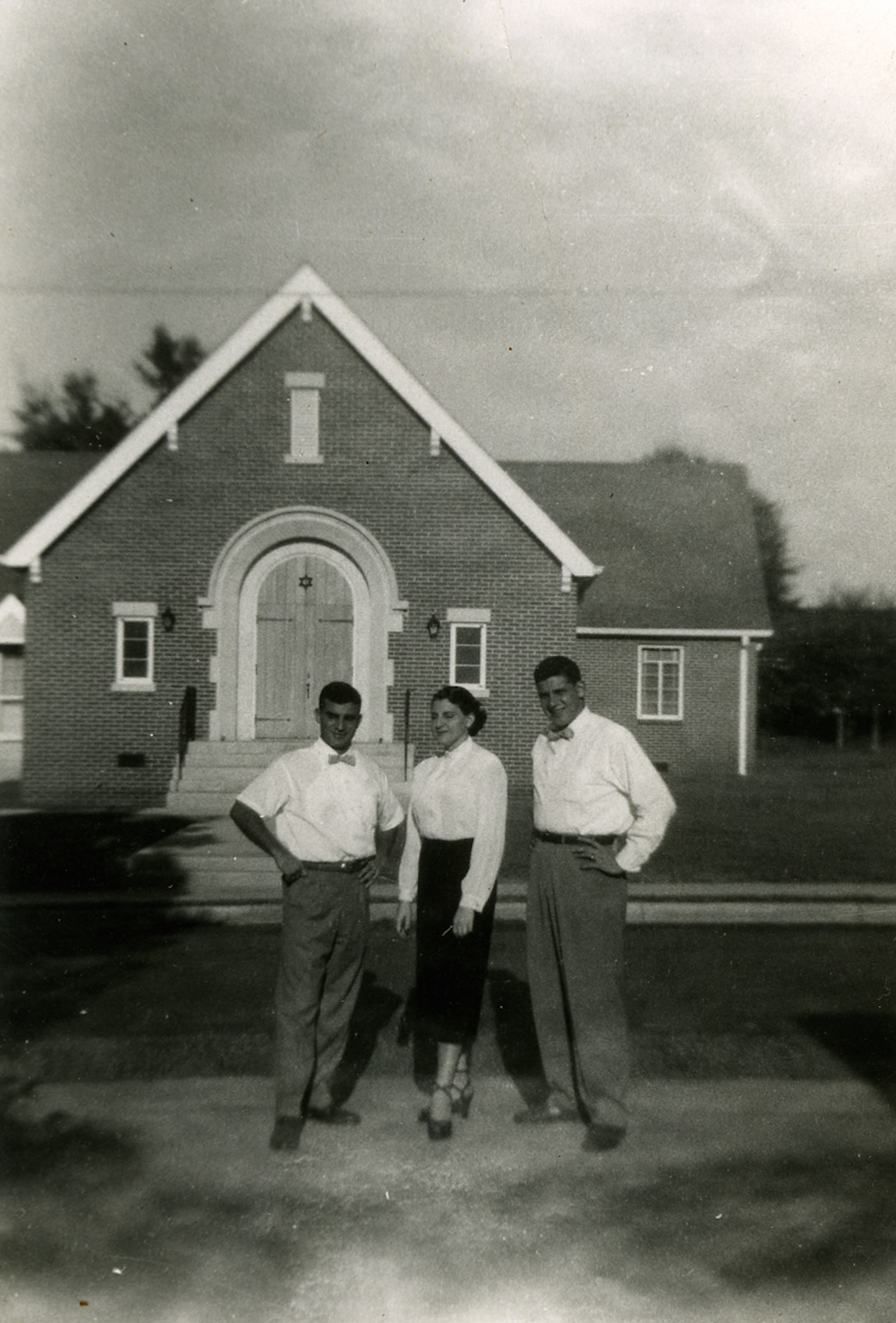

I was six years old when Temple B’Nai Israel opened in 1948. I found out later that a committee led by Max Siegel, with Herman Poliakoff (my uncle), Hyman Draisen (my father), Nathan Fleishman, Nahum Rosenblum, and others led the drive to build the synagogue that presently stands on Oakland Avenue in Anderson. It was built at that time because Mr. Siegel wanted his grandson Ronnie Bern to have his bar mitzvah in a “proper” synagogue. At the time bar and bat mitzvah candidates were trained by Joe Fleishman and Hyman Draisen.
I remember going to Sunday school with many other kids up until the time of my own bar mitzvah. Flo Fleishman was the religious school leader and classes were taught by volunteer members. In the 1970s, my sister Bernice Draisen Shuman (now Goldman), my wife, Ellen Cherkas Draisen, and Lynn Vinson Friedman taught our young children there. As president of the congregation in the early ’80s, I remember recruiting (begging) Lynn, who was a teacher, to add Hebrew to the curriculum. She agreed, even though she didn’t know how to read Hebrew. I bought the books and told her she just had to stay one lesson ahead of the kids. She did great with it!
The congregation was initially Orthodox, with services led by George Ackerman of Walhalla, South Carolina, and a series of part-time rabbis, including Rabbis Norman Goldberg, William (Bill) Feyer, and Israel Gerber. In the 1950s, there was a shift toward Conservative practices. For a few years the Shabbat services were Conservative but High Holidays were Orthodox. In the late ’70s, the congregation shifted to Reform services. We briefly joined the Reform Movement and still use the Reform Gates of Prayer as our prayer book on Shabbat.
Many improvements have been made to the sanctuary, which can seat 150 people. We installed air conditioning in the mid- to late ’50s, replaced the carpeting, and added padding to the pews. We replaced the old 1940s roll-out windows with 12 beautiful stained glass windows, and we recently added stained glass doors to our ark in memory of Alvin Fleishman, reportedly Anderson’s first bar mitzvah. The ark now houses three Torahs. The original was brought over from Kiev by my grandfather Zalman Poliakoff. We also have a Holocaust Torah from a community in Czechoslovakia that we traditionally use for the afternoon service on Yom Kippur.
In recent times, Dr. Robert Kimmel, Dr. Peter Cohen, and Mike Krupsaw have provided bar and bat mitzvah training. Lay leaders conduct services every Friday night, and Dr. Kimmel leads services for the major holidays, as well as several Shabbat services.
The membership of our congregation has stayed fairly steady over the past ten years. At its peak Temple B’Nai Israel served 36 member-families, a number that now stands at 25. The demographics are a cause of concern. When we had 36 families most members were in their 30s and 40s and there were about 50 kids. Now there are almost no children—in the 1990s our Sunday school classrooms were converted to one large area for break-the-fast meals and Passover Seders. Our membership ranges in age from 60 to 80.
I’m not sure what the future holds for Temple B’Nai Israel of Anderson. While the general population of the Anderson area is growing, the number of Jews is declining. We do lose some potential members, especially those with young children, to Temple of Israel, Beth Israel, and Chabad in Greenville. New industry is coming to Anderson all the time and there is a major push to build hotels, parks, and a convention facility in the Lake Hartwell recreational area. We have some new members, recent retirees who have moved to our area from other parts of the country. Maybe if we hold on long enough, a retirement community like the one Del Webb built near Bluffton will come here and bring with it sufficient numbers of Jewish residents to spark a revival in our congregation.